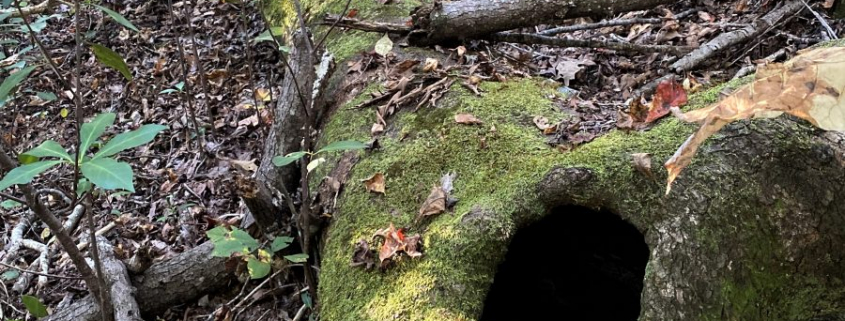A First Visit to Alabama’s Lake Lurleen State Park: Upland Forest
This is the second of two Posts from my October 14, 2020 hike of the Ridge Loop Trail at Lake Lurleen State Park. The first of the two focused on the mesic lower slope forest: https://stevejonesgbh.com/2020/11/19/a-first-visit-to-alabamas-lake-lurleen-state-park-moist-lower-slope-forest/
I direct this Post to the more xeric upland forest half of the loop.
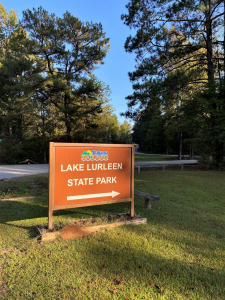
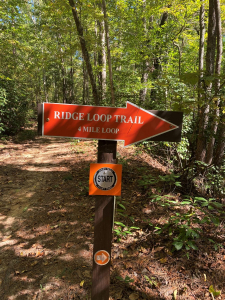
The upland forest (below) is more open, composed heavily of chestnut oak (Quercus prinus), noticeably shorter than the predominantly yellow poplar (Liriodendron tulipifera) and red oak on the lower slopes. Convex-shaped upper slopes, especially those facing south and west, simply cannot support dense stands of towering trees. Soils are more shallow, less fertile, and drier. Crown heat often rises above a threshold for stomates to remain open, shutting the photosynthesis operation down often late morning through mid-afternoon. Were I to be reborn as a tree, my preference is to be a red oak on a lower slope cove site, deeply concave, facing to the northeast.
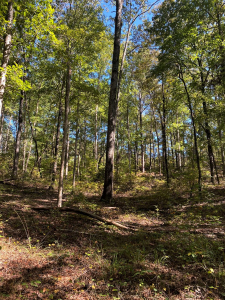
Longleaf pine (Pinus palustris) competes effectively and grows well on the upland sites. Fire-dependent, longleaf-based ecosystems have adapted over the eons to the harsher environment and occasional natural fires that sweep the more xeric uplands. I admire this species that once dominated some 90 million acres here in the southeastern US, and is now relegated to fewer than five million acres. Public land managers are implementing intentional management practices on state and federal lands, and assisting private landowners (individuals and forest industry) to restore the longleaf forests over much of its natural range. Although the species occurs in a wide variety of upland and flatwood sites, it is common on sandy, infertile, well-drained soils, mostly below 660 feet elevation (USDA). I appreciate longleaf pine’s ability to make the best of poor sites, producing straight thick boles on relatively infertile sites. Thick pines needles covered the trail under the longleaf pine canopy, softening our steps and muting our footfalls.
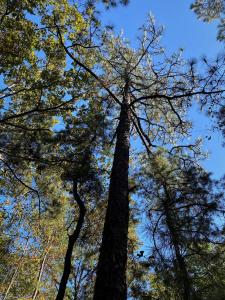
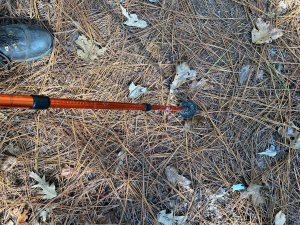
I include this photo to highlight the very effective signage the Park employs… and to evidence that I made it the the trail’s midway point. Note the open understory, widely-spaced overstory, and patchy sunlight penetrating to the forest floor.
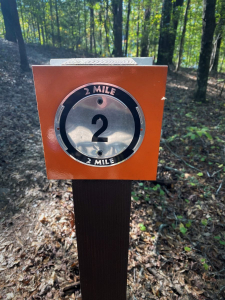
We encountered many individuals and a thicket or two of farkleberry (also known as sparkleberry), the only tree-form species of its genus (Vaccinium arboreum). From Texas A&M University online Native Plant Database: Farkleberry is a small, stiff-branched, evergreen or persistent-leaved tree or large shrub found on acid, sandy, well-drained soils in fields, clearings, open mixed forests, dry hillsides and wet bottomlands in east Texas west to the Bastrop area. It has small, bell-shaped, drooping white or pinkish flowers in loose racemes followed by small, black inedible fruit that matures in the fall. The leathery, glossy green leaves turn rich red in autumn. I have yet to run across farkleberry other than on similarly impoverished sites. Nevertheless, I appreciate its tenacity, its courage in claiming such sites as its preferred domain, and its rugged toughness of stem-wood. No need to attempt walking through a stand of sparkleberry…it does not yield to casual passers-through!
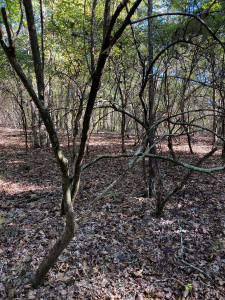
Whether on deep, moist, rich site or shallow upland, forest life and death dance a steady waltz. The pine stem (below) toppled 5-10 years ago, judging from its state of decomposition. The downed trunk supports an algae-green coat. Note once again the sparse forest… and considerable sunlight reaching the forest floor. The stand is sparsely stocked. The site is relatively dry and infertile, yet the algae is indifferent, drawing what it needs to flourish.
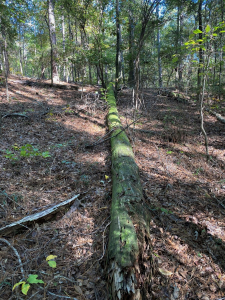
Nearby I photographed this foot-tall black oak (Quercus velutina), a member of the red oak group. I almost referred to this individual as a seedling. Very likely it is not a seedling in the truest sense of having sprouted from an acorn within the recent 2-5 years. Instead, under a full canopy with limited sunlight infiltration, this individual may have persisted for a decade, perhaps several. Black oak’s successful renewal relies upon such advanced regeneration sinking roots, storing carbohydrates, and awaiting disturbance, which for many of our oaks could even be a fire that would burn the leafy top and reduce overstory density enough to bring sunlight to the forest floor. Robust roots and adventitious buds, just below the soil surface, where it is safe from fire, respond with vigorous new growth.
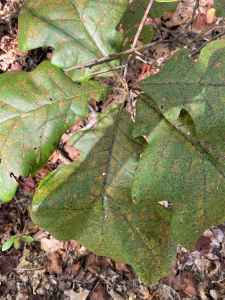
Nature rewards preparation, persistence, and patience. Necessary capabilities are honed through untold generations of adaptation. Resilience requires a manifold toolkit. Quite simply, a species occupying a somewhat xeric, fire prone ridgeline must have exigent measures at-hand to survive and capitalize on periodic fires.
Ghost Pipes
The gardeningknowhow.com website offers an easy description for a plant that has fascinated me for at least a half-century: For obvious reasons, Indian pipe is also known as “ghost plant” – or sometimes “corpse plant.” Although there is not an Indian pipe fungus, Indian pipe is a parasitic plant that survives by borrowing nutrients from certain fungi, trees and decaying plant matter. This complicated, mutually beneficial process allows the plant to survive. For as long as I can remember I have known this odd plant as Indian ghost-pipe. Indian pipe (Monotropa uniflora) has no need for true leaves, complete with chlorophyll. It’s small white scales are a residual derivative of its long-ago forbearers that were not parasitic. This was the first time I’ve seen ghost plant in 2020, yet it is widespread enough that I see it frequently every fall across my forest wanderings.
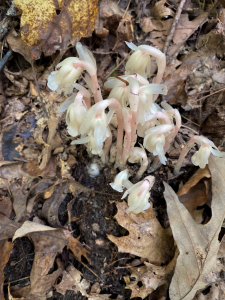
Tree Form Oddities
We found indisputable evidence that these rocky upland soils are shallow, in this case 12-15-inches deep. This oak toppled downhill. I recall from my doctoral research observations and literature review that most trees (some 90 percent) fall downhill. At least two reasons:
- The physical strength of the root anchorage on the downhill side is strongest
- The crown is heavier on the downhill side — the canopy extends further (more branches; more weight) into the down-side canopy opening
Tree-throw is a not so-subtle act of erosion, slowly and inexorably over time, tree by tree, delivering soil in episodic violent crashes from up-slope to down. Imagine a million years of such action…a million Earth-sun circuits is nothing to Nature. Nor are the ancient alpine Appalachians.
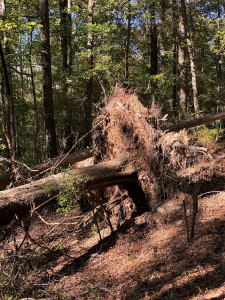
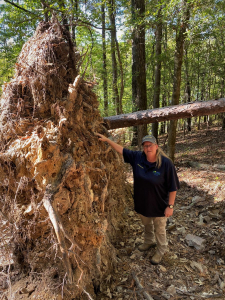
From this point on I’ve slipped back into the lower slope forest. I’m intrigued by tree form oddities. The hollowed sweetgum (Liquidambar styraciflua) stump is trailside near our end point. That the stump continues to grow callous tissue indicates that its wood yet lives. Its trunk fell many years ago away from the camera. The union with its roots enabled the fallen stem to sprout buds and branches, one of which is now the 14-inch diameter trunk about 15 feet beyond. That tree reaches into the main canopy. Nature is prepared for contingencies. Had the individual not had the ability to respond with dormant buds and send a new shoot vertically its genetic line may have abruptly ended. Instead the 14-inch surviving tree is dropping seeds… and may continue to do so for many decades.
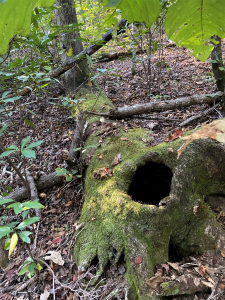
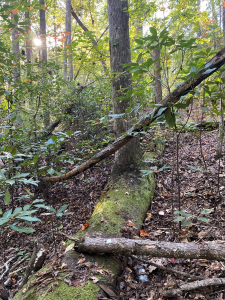
A two-foot diameter yellow poplar tells a related tale. Early in this poplar’s life another tree crashed down upon it, See the 45-degree orientation of its lower trunk, and the abrupt terminal to the right, where the original stem broke, ending life from that point to whatever stem extended beyond. Damaged but far from destroyed, the poplar devoted its energy and life to a new shoot, now the dominant canopied yellow poplar. Every parcel of land and even every tree has a story to tell for those who know the language of forest life.
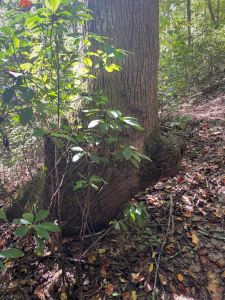
I’ve published enough of these Nature-Inspired Life and Living Posts that occasionally I can’t resist the temptation to repeat something. Now I’m committing a very obvious repetition. I’m a sucker for sourwood… to the point that here is a photo I placed in last month’s first Lake Lurleen State Park Post. And here is the verbatim text: Within the stand of straight oaks and poplar, sourwood (Oxydendrum arboreum) refused to reach inverse to the force of gravity, instead the species chooses what appears to be a defiant wandering through the mid-canopy, a rogue free spirit. I’ve long-admired its independence. All other species of my familiarity are either positively phototropic (growing toward sunlight) or negatively geotropic (oriented opposite the draw of gravity). The individual below is typical of sourwood’s free-form throughout its range. Sourwood is special, perhaps because I’ve always been anything but a free spirit!
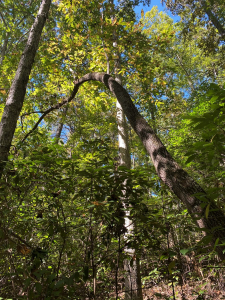
I’ll drop you back at Lake Lurleen, a place to ponder and reflect. Find a tree upon which to lean. Contemplate what John Muir wrote a century ago about the Nature of our Earth:
This grand show is eternal. It is always sunrise somewhere; the dew is never dried all at once; a shower is forever falling; vapour is ever rising. Eternal sunrise, eternal dawn and gloaming, on sea and continents and islands, each in its turn, as the round earth rolls.
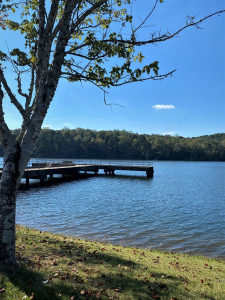
Without a doubt, Lake Lurleen State Park offers much that I will yet again explore. So many mysteries and secrets within reach…hidden in plain sight.
Alabama State Parks Foundation
I’ll remind you that I serve on the Alabama State Parks Foundation Board, in part because of my love of Nature and in recognition for my writing many prior Posts about visiting and experiencing the Parks. I urge you to take a look at the Foundation website and consider ways you might help steward these magical places: https://asparksfoundation.org/ Perhaps you might think about supporting the Parks System education and interpretation imperative: https://asparksfoundation.org/give-today#a444d6c6-371b-47a2-97da-dd15a5b9da76
The Foundation exists for the sole purpose of providing incremental operating and capital support for enhancing our State parks.
Thoughts and Reflections
My mid-October circuit of Lake Lurleen State Park’s Ridge Loop Trail revealed two Nature-Truths:
- Every parcel of land and even every tree has a story to tell for those who know the language of forest life
- Nature rewards preparation, persistence, and patience
Inhale and absorb Nature’s elixir. May Nature Inspire, Inform, and Reward you!
Note: All blog post images created & photographed by Stephen B. Jones unless otherwise noted. Please circulate images with photo credit: “©2020 Steve Jones, Great Blue Heron LLC. All Rights Reserved.”
Another Note: If you came to this post via a Facebook posting or by an another route, please sign up now (no cost… no obligation) to receive my Blog Post email alerts: http://eepurl.com/cKLJdL
And a Third: I am available for Nature-Inspired Speaking, Writing, and Consulting — contact me at steve.jones.0524@gmail.com
Reminder of my Personal and Professional Purpose, Passion, and Cause
If only more of us viewed our precious environment through the filters I employ. If only my mission and vision could be multiplied untold orders of magnitude:
Mission: Employ writing and speaking to educate, inspire, and enable readers and listeners to understand, appreciate, and enjoy Nature… and accept and practice Earth Stewardship.
Vision:
- People of all ages will pay greater attention to and engage more regularly with Nature… and will accept and practice informed and responsible Earth Stewardship.
- They will see their relationship to our natural world with new eyes… and will understand more clearly their Earth home.
Tagline/Motto: Steve (Great Blue Heron) encourages and seeks a better tomorrow through Nature-Inspired Living!
Steve’s Three Books
I wrote my books Nature Based Leadership (2016), Nature-Inspired Learning and Leading (2017), and Weaned Seals and Snowy Summits: Stories of Passion for Place and Everyday Nature (2019; co-authored with Dr. Jennifer Wilhoit) to encourage all citizens to recognize and appreciate that every lesson for living, learning, serving, and leading is either written indelibly in or is powerfully inspired by Nature.
I began writing books and Posts for several reasons:
- I love hiking and exploring in Nature
- I see images I want to (and do) capture with my trusty iPhone camera
- I enjoy explaining those images — an educator at heart
- I don’t play golf!
- I actually do love writing — it’s the hobby I never needed when my career consumed me
- Judy suggested my writing is in large measure my legacy to our two kids, our five grand kids, and all the unborn generations beyond
- And finally, perhaps my books and Blogs could reach beyond family and touch a few other lives… sow some seeds for the future

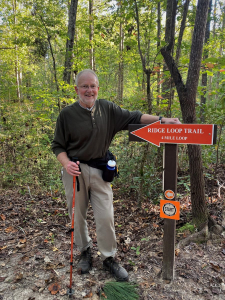
All three of my books (Nature Based Leadership; Nature-Inspired Learning and Leading; Weaned Seals and Snowy Summits) present compilations of personal experiences expressing my (and co-author Dr. Wilhoit for Weaned Seals and Snowy Summits) deep passion for Nature. All three books offer observations and reflections on my relationship to the natural world… and the broader implications for society. Order any and all from your local indie bookstore, or find them on IndieBound or other online sources such as Amazon and LifeRich.

